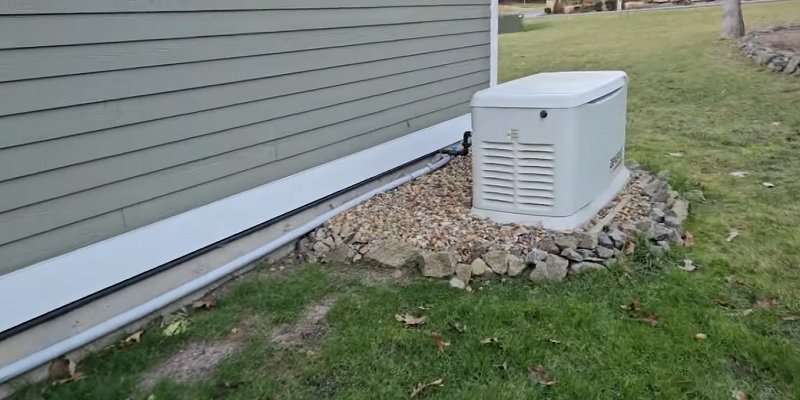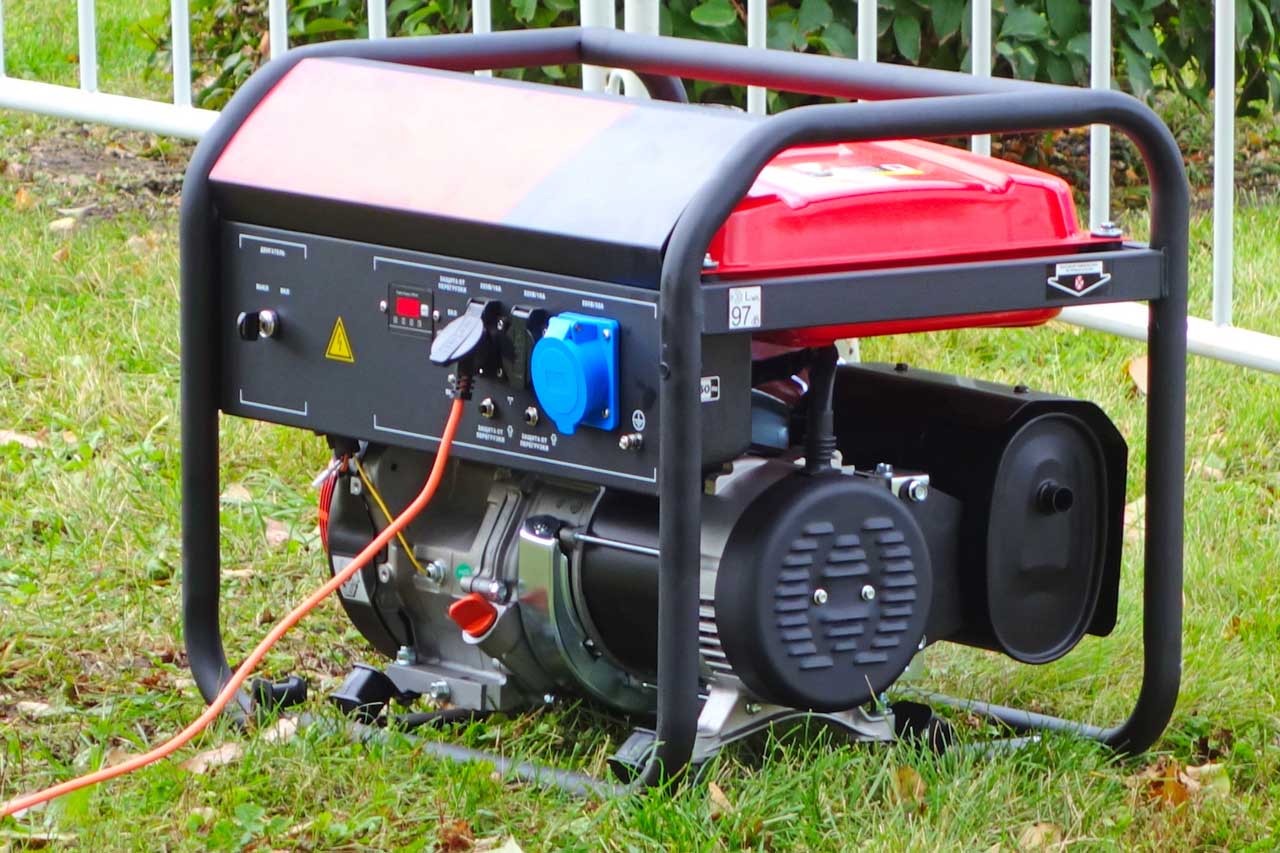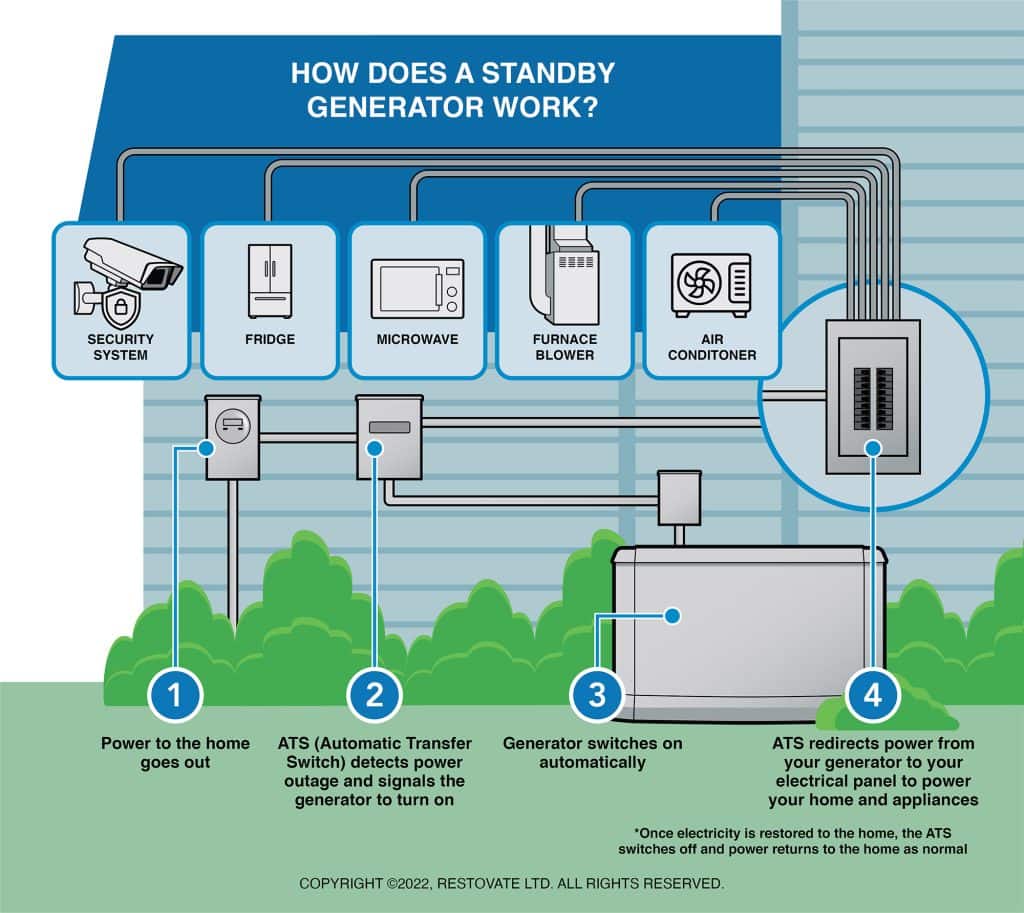Disclosure: This post contains affiliate links and I will be compensated if you make a purchase after clicking through my links. Learn More
A standby generator should be placed at least 5 feet away from the house. Optimal distance ranges between 5 to 10 feet.
Placing a standby generator at a proper distance from your house is crucial for safety and efficiency. It ensures adequate ventilation and prevents carbon monoxide buildup, which can be hazardous. Local building codes and manufacturer guidelines often recommend maintaining a distance of 5 to 10 feet.

This placement also reduces noise and vibration, making the generator less intrusive. Proper installation not only protects your home but also prolongs the lifespan of the generator. Always consult a professional to determine the best location, considering both safety and functionality. Adhering to these guidelines will ensure your standby generator operates effectively and safely.
Importance Of Generator Placement
Placing a standby generator correctly is crucial. The right placement ensures safety and efficiency. It also helps in reducing noise and emissions. Proper placement can extend the generator’s lifespan.
Safety Concerns
Safety is the foremost reason for correct generator placement. A generator should be at least 20 feet away from the house. This distance reduces the risk of carbon monoxide poisoning. Always place the generator outdoors. Never place it inside a garage or basement.
Ensure the generator is on a flat, stable surface. This prevents tipping and potential fuel spills. Keep the area around the generator clear of debris and flammable materials.
Noise Reduction
Generators can be loud. Noise levels can disturb the household and neighbors. Placing the generator away from living areas helps in noise reduction. Consider installing a sound-dampening enclosure.
Planting shrubs around the generator can also reduce noise. Choose locations with natural sound barriers like fences or walls. This ensures a quieter environment.
Manufacturer Recommendations
Understanding the manufacturer recommendations for standby generator placement is crucial. It ensures safety and efficiency. This section delves into the specifics, providing clear guidelines for homeowners.
Distance Specifications
Manufacturers often specify the distance a generator should be from a house. These distances vary based on the generator model and brand.
- Some recommend a minimum of 5 feet.
- Others suggest a range between 10-15 feet.
Keep in mind, these distances help prevent exhaust fumes from entering the home. They also reduce the risk of fire hazards.
Always follow the distance specifications given by the manufacturer. This ensures optimal performance and safety.
Installation Manuals
The installation manuals are your go-to resource. They provide detailed instructions and recommendations. Each generator model has specific requirements.
- Check the manual for your generator model.
- Locate the section on placement and distance.
- Follow the guidelines closely.
These manuals also include diagrams and safety tips. They help you understand the best placement for your generator.
Remember, different brands have different requirements. Always refer to the specific manual for your generator. This ensures you adhere to the correct distance specifications and installation guidelines.
Local Building Codes
Understanding local building codes is crucial for generator placement. These codes ensure safe distances and proper installation.
Zoning Laws
Zoning laws dictate where you can place a generator. They prevent conflicts with neighbors and protect property values.
| Zone Type | Minimum Distance from House |
|---|---|
| Residential | 5-10 feet |
| Commercial | 10-15 feet |
Permit Requirements
Before installing a generator, check if you need a permit. A permit ensures the installation meets safety standards.
- Application Fee: Some areas require a fee.
- Inspection: An inspector might visit your property.
- Approval Time: Allow time for permit approval.
Impact Of Weather Conditions
Weather conditions play a crucial role in determining the placement of a standby generator. Ensuring the generator’s safety and functionality is essential. Let’s explore how flood zones and wind resistance impact the distance between the generator and the house.
Flood Zones
Flood zones are areas prone to flooding. If your home is in such a zone, the generator’s placement is critical. Water can damage the generator, rendering it useless.
| Factors | Recommendations |
|---|---|
| Elevation | Place the generator on a raised platform. |
| Distance | Keep it at least 20 feet from the house. |
| Drainage | Ensure proper drainage around the generator. |
Wind Resistance
Wind resistance is another important factor. Strong winds can damage the generator and its connections. Positioning it in a sheltered location helps.
- Install wind barriers around the generator.
- Use secure anchoring systems.
- Keep the generator at least 10 feet from the house.
By considering these factors, you can ensure your generator’s longevity and reliability during extreme weather conditions.
Fuel Type Considerations
Choosing the right fuel type for your standby generator is crucial. It affects both performance and installation distance. Different fuel types have unique requirements and benefits. Understanding these can help you decide how far your standby generator should be from your house.
Gasoline Generators
Gasoline generators are popular for their availability. You can find gasoline easily at local gas stations. They are portable and easy to use. But, gasoline is highly flammable. This means you need to place the generator further from the house for safety. Generally, experts recommend at least 20 feet. This reduces the risk of fire hazards and ensures proper ventilation.
Gasoline also has a short shelf life. This requires frequent refills and proper storage. Ensure you have enough space to store gasoline safely away from the generator. Safety comes first, always.
Propane And Natural Gas
Propane and natural gas generators offer distinct advantages. They are cleaner and more efficient than gasoline. Propane has a long shelf life, making it a reliable choice. You can store propane in large tanks, either above or below ground.
Read Also: How much propane does a generator use?
Natural gas is delivered through pipelines. This means you don’t need to store it. Both fuels require specific installation setups. Propane tanks should be at least 10 feet away from the house. This ensures safety and proper ventilation. Natural gas generators can be closer, around 5 to 10 feet.
Natural gas is less flammable and more convenient. There’s no need to refill tanks, making it a hassle-free option.
| Fuel Type | Distance from House | Advantages | Considerations |
|---|---|---|---|
| Gasoline | 20 feet | Easy availability | Highly flammable, short shelf life |
| Propane | 10 feet | Long shelf life | Requires storage space |
| Natural Gas | 5-10 feet | No need for storage | Requires pipeline installation |
Choosing the right fuel type can simplify your generator setup. Consider safety, convenience, and cost. This will help you decide the best distance for your generator.

Electrical Wiring Distance
Choosing the right distance for your standby generator is crucial. One key factor is the electrical wiring distance. Ensuring a proper distance can prevent power loss and ensure safety.
Voltage Drop
A significant issue with long wiring distances is voltage drop. Voltage drop occurs when electrical power loses some of its strength over long cables. This can affect the performance of your appliances.
To minimize voltage drop:
- Use cables with larger diameters.
- Keep the generator as close to the house as possible.
- Regularly inspect and maintain the cables.
Voltage drop is measured in percentage. Aim to keep it below 3% for optimal performance.
Cable Specifications
Choosing the right cables is crucial. The cable specifications can impact the efficiency of your standby generator.
Here are some key factors:
- Cable Gauge: Thicker cables can carry more power with less loss.
- Insulation: Proper insulation prevents damage and ensures safety.
- Length: Shorter cables are better for reducing voltage drop.
Here’s a simple table to help you choose the right cable:
| Distance (Feet) | Cable Gauge |
|---|---|
| 0-50 | 10 AWG |
| 50-100 | 8 AWG |
| 100-200 | 6 AWG |
These specifications ensure your generator runs efficiently.
Noise Regulations
Standby generators can be noisy. Many areas have strict noise regulations. These rules protect residents from excessive noise. Understanding these regulations is crucial. It ensures your generator doesn’t disturb your neighbors.
Decibel Levels
Noise is measured in decibels (dB). Lower decibels mean quieter sounds. High decibels indicate louder noises. Most areas limit how loud a generator can be. Usually, the limit is around 60-70 dB. This is about as loud as a normal conversation. Check your local regulations for specific limits.
Read Here: How Loud is 74 Db Generator
Neighborhood Compliance
Generators must comply with neighborhood rules. Some areas have stricter regulations. They might have lower decibel limits. Others may have specific hours when generators can run. Violating these rules can lead to fines. It can also cause conflict with neighbors.
| Area Type | Allowed Decibel Level |
|---|---|
| Residential | 60-70 dB |
| Commercial | 70-80 dB |
| Industrial | 80-90 dB |
Always check your local noise ordinances. This ensures you remain compliant. It also keeps your neighborhood peaceful.
Maintenance And Accessibility
Ensuring your standby generator is easily maintained and accessible is crucial. The generator’s distance from the house can affect maintenance efforts. Proper placement can make routine checks easier and more efficient.
Routine Checks
Routine checks are necessary to keep your generator running smoothly. Placing the generator too far from the house can make these checks more difficult. The generator should be close enough for easy inspection, but not too close to cause noise issues.
A good rule of thumb is to place the generator within 20 to 50 feet from the house. This range allows for easy access while maintaining safety. Regular checks include:
- Inspecting fuel levels
- Checking oil levels
- Examining connections and wiring
- Testing the battery
Ease Of Access
Ease of access is vital for both routine maintenance and emergency repairs. Positioning the generator in an accessible location can save time and effort. Avoid placing the generator in hard-to-reach spots, like behind dense bushes or in cramped spaces.
Create a clear path to the generator. This path should be free from obstacles to ensure quick access. A good pathway can include gravel or stepping stones. This setup helps during bad weather or in low light conditions.
Consider using a small table to summarize key points for better clarity:
| Aspect | Recommendation |
|---|---|
| Distance from House | 20 to 50 feet |
| Pathway | Clear and obstacle-free |
| Routine Checks | Inspect fuel, oil, connections, battery |
By following these guidelines, you can ensure your standby generator remains easy to maintain and access.
Professional Installation Services
Installing a standby generator requires expertise. Professional installation ensures safety and efficiency. Proper setup can extend the lifespan of your generator. Here, we discuss the importance of certified contractors and service warranties.
Certified Contractors
Hiring certified contractors is crucial. They have the necessary skills and experience. Certified contractors follow local codes and regulations. This ensures your generator is installed correctly and safely.
| Benefits of Certified Contractors |
|---|
| Proper Installation |
| Compliance with Local Codes |
| Enhanced Safety |
| Expert Troubleshooting |
Service Warranties
A service warranty provides peace of mind. It covers potential issues that might arise. Warranties ensure you receive timely repairs and maintenance. This can save you money in the long run.
- Comprehensive Coverage: Warranties often cover parts and labor.
- Timely Repairs: Certified technicians handle repairs quickly.
- Cost Savings: Warranties prevent unexpected expenses.
Ensure you understand the terms of your warranty. It’s essential for protecting your investment.
Common Mistakes To Avoid
When installing a standby generator, certain mistakes can lead to problems. Avoiding these mistakes ensures your generator works properly and safely. Below are some common mistakes to avoid.
Improper Ventilation
Proper ventilation is crucial for a standby generator. Generators produce exhaust gases. These gases need to be released safely. If they build up, they can be dangerous.
Ensure the generator has enough space around it. This allows fresh air to flow. It also lets exhaust gases escape. Avoid placing the generator near windows or doors. This prevents gases from entering the house.
Here are some tips for proper ventilation:
- Keep at least 5 feet of space around the generator.
- Ensure the exhaust points away from the house.
- Regularly check and clean the vents.
Inadequate Grounding
Grounding the generator is essential for safety. It prevents electrical shocks. It also protects the generator from power surges.
Improper grounding can cause serious issues. It can damage the generator. It can also harm people using it.
Follow these steps to ensure adequate grounding:
- Use a proper grounding rod.
- Connect the grounding wire securely.
- Inspect the grounding system regularly.
By avoiding these common mistakes, your standby generator will run safely and efficiently. Proper ventilation and grounding are key to its performance.

Frequently Asked Questions
How Far Can A Standby Generator Be From My House?
A standby generator can be 15-20 feet from your house for safety.
What Is The Safe Distance For A Generator?
The safe distance is usually 15-20 feet to prevent carbon monoxide poisoning.
Can A Generator Be Too Close To The House?
Yes, it can be. It should be at least 15 feet away to avoid fumes entering your home.
What Factors Determine Generator Placement?
Factors include fuel type, local codes, and proximity to windows and doors. Always follow manufacturer guidelines.
Final Thoughts
Choosing the right distance for your standby generator is crucial for safety and efficiency. Keep it within 20-30 feet from your house. This ensures optimal performance and reduces noise. Always consult local codes and a professional installer for the best results.
Proper placement guarantees reliable power during outages.


